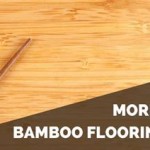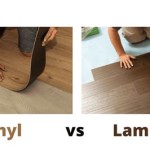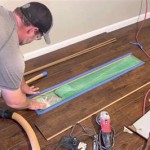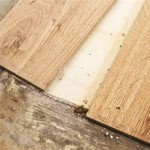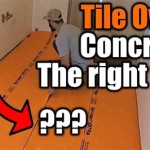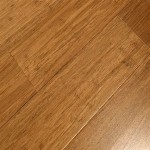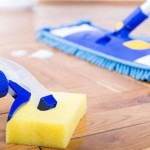Can You Put Vinyl Flooring on Bathroom Walls?
Vinyl flooring has become a popular choice for bathroom floors due to its water resistance, durability, and affordability. However, some homeowners are exploring the possibility of extending this practicality to their bathroom walls. This article examines the feasibility and implications of using vinyl flooring on bathroom walls.
Water Resistance and Durability
Vinyl flooring's primary appeal lies in its inherent water resistance. The material's composition, typically consisting of polyvinyl chloride (PVC) layers, creates a barrier against moisture. This makes it a seemingly suitable option for bathroom walls, which are constantly exposed to humidity and water splashes. Furthermore, vinyl flooring is engineered for durability, designed to withstand heavy foot traffic. This characteristic translates to potential resilience against daily wear and tear on walls, including impacts and scuffs.
Installation Considerations
While the concept of using vinyl flooring on bathroom walls might appear straightforward, installation presents unique challenges. Unlike floors, walls require vertical application, which can affect adhesive performance and overall stability. The weight of the vinyl flooring, especially thicker planks or tiles, may pose difficulties for standard wall adhesives. Furthermore, ensuring a smooth, even finish on a vertical surface requires meticulous preparation and precise application. Imperfect installation can lead to air bubbles, warping, and ultimately, a compromised waterproof seal. Specialized adhesives and installation techniques might be necessary for successful application on bathroom walls.
Aesthetics and Design
Vinyl flooring manufacturers offer a wide array of designs, colors, and textures, mimicking materials such as wood, stone, and ceramic tiles. This design versatility can be an advantage when considering vinyl flooring for bathroom walls, offering homeowners the opportunity to create a cohesive and stylish look. However, applying a material typically associated with floors to walls can create an unconventional aesthetic. Homeowners must carefully consider the overall design impact and whether it complements or clashes with the bathroom's existing features and fixtures. The visual weight of certain vinyl flooring designs might also make a small bathroom feel cramped.
Ventilation and Moisture Management
Bathrooms are inherently humid environments. While vinyl flooring offers excellent water resistance, improper ventilation can still lead to moisture buildup behind the material. This trapped moisture can promote mold and mildew growth, potentially compromising the wall structure and posing health risks. Therefore, adequate bathroom ventilation is crucial when using vinyl flooring on walls. Ensuring proper airflow through exhaust fans and open windows can help mitigate moisture accumulation and maintain a healthy bathroom environment.
Cost-Effectiveness
Compared to traditional bathroom wall materials like ceramic tile or natural stone, vinyl flooring can be a more budget-friendly option. The material itself is generally less expensive, and installation, even with potential added complexities for wall application, can still be more affordable than other options. However, the long-term cost-effectiveness needs consideration. While durable, vinyl flooring might not have the same lifespan as other wall materials, especially in a high-moisture environment. Potential repairs or replacements down the line could impact the overall cost analysis.
Alternatives to Vinyl Flooring for Walls
While vinyl flooring presents a potentially viable option for bathroom walls, several alternative materials offer comparable benefits with potentially fewer installation challenges. Waterproof wall panels, specifically designed for bathroom applications, provide a streamlined installation process and offer excellent moisture resistance. Ceramic and porcelain tiles remain popular choices for their durability, design versatility, and inherent water resistance. Luxury vinyl tile (LVT), although technically a type of vinyl flooring, often comes in thinner, more wall-friendly formats and designs.
Substrate Compatibility
The existing wall substrate plays a significant role in the success of vinyl flooring installation. Smooth, even surfaces like drywall or cement board provide the best base for adhesion. Textured walls or surfaces with imperfections may require extensive preparation, including leveling and smoothing, before applying vinyl flooring. Furthermore, the substrate must be clean and free of any debris or mold to ensure proper adhesion. Failing to address substrate issues can lead to uneven application, air bubbles, and ultimately, a compromised waterproof seal.
Maintenance and Cleaning
Maintaining and cleaning vinyl flooring on bathroom walls is relatively straightforward. Regular cleaning with mild soap and water can remove soap scum, dirt, and grime. Abrasive cleaners or harsh chemicals should be avoided as they can damage the vinyl's surface. Preventing excessive moisture buildup and ensuring adequate ventilation can further prolong the lifespan and maintain the aesthetic appeal of the vinyl flooring on bathroom walls.

Can You Use Vinyl Flooring On Bathroom Walls Rustic Remodel Lighting Diy

Vinyl Floor On The Wall Turn 90 Degrees Choose Diffe Way Live Flooring Bathroom Tile Plank

Best Bathroom Flooring Options

Can You Install Vinyl Flooring On Walls L Antic Colonial

Installed Vinyl Plank Flooring On My Bathroom Wall Love The Texture Color Walls

How To Install Vinyl Plank Flooring In A Bathroom Fixthisbuildthat

Bathroom Makeover Blogger Vs Builder Grade East Coast Creative

Installing Waterproof Vinyl Flooring On Shower Walls Bathroom Design Inspiration Wall

Vinyl Planks In Bathrooms Residential Inspiration Flooring

Bathroom Shower Vinyl Wall Panel Vs Tiles Which One Should You Choose Step Guard Floors
See Also
